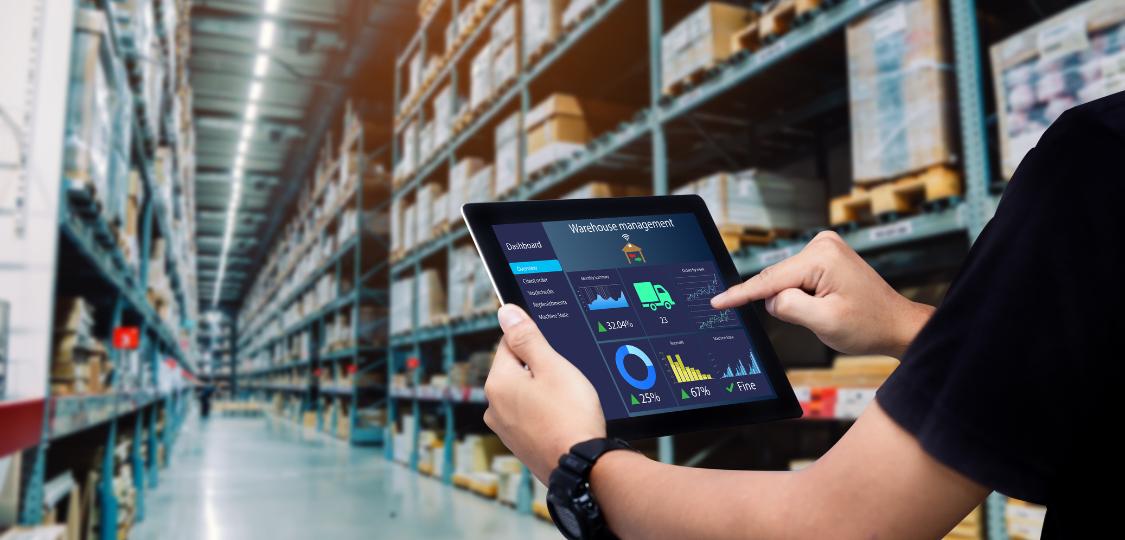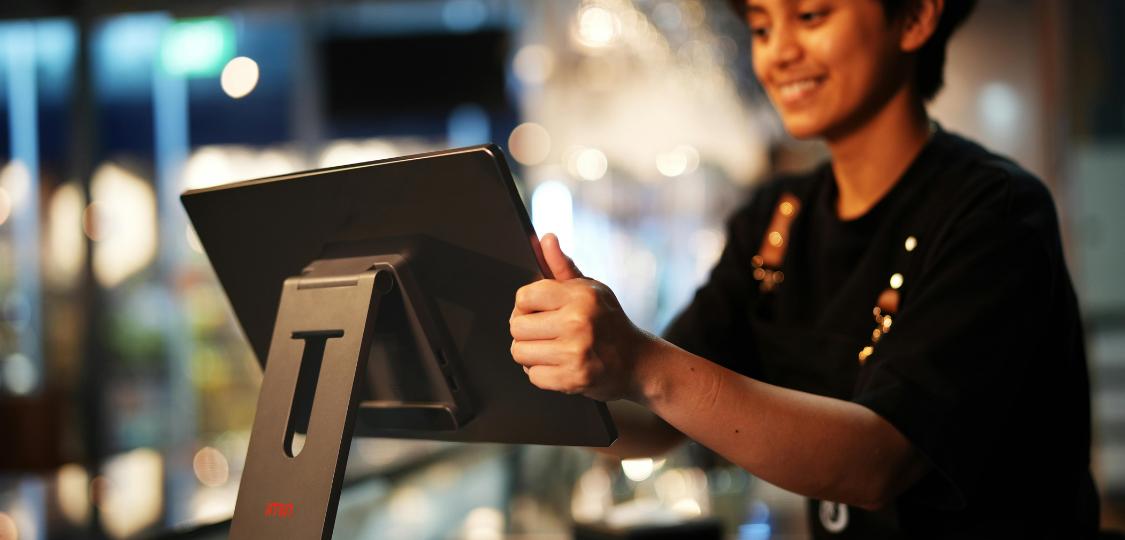Scaling Multi-Location Businesses: POS Features That Save Time
POS features can save your time, and when you’re running multiple locations, saving time isn’t just nice, it’s absolutely essential. Whether you’re managing two cafés in Melbourne, a chain of bottle shops in Sydney, or retail stores spread across Australia, the daily juggle can be overwhelming. Stock, staff, customers, payments, reporting, everything doubles (or triples) when you scale.
That’s where your POS system comes in. More than just a cash register, a modern POS is a business management tool that can handle the grunt work for you. With the right features, you’ll cut out double-handling, keep your team on the same page, and have more time to focus on growth instead of just firefighting.
In this article, we’ll explore the most important POS features that help multi-location businesses save time, reduce stress, and create a smoother operation across all sites.
Why Scaling Creates New Challenges
Running one location is hard enough, but adding more to the mix changes the whole picture. Suddenly you’re dealing with:
- Stock imbalances– One store sells out, another is stuck with excess.
- Staff training and rostering– You want consistency without spending weeks onboarding.
- Customer expectations– People expect the same service whether they visit your Brisbane CBD shop or your Gold Coast branch.
- Reporting overload– Trying to pull insights from different stores can be a nightmare without the right system.
The truth is, scaling doesn’t just multiply your revenue—it multiplies the headaches too. Unless, of course, you’ve got a POS designed to handle them.
POS Features That Save Time for Multi-Location Businesses
Here’s where the rubber meets the road. These are the features that make the biggest difference when you’re scaling.
1. Centralised Inventory Management
If you’ve ever been stuck ringing around different stores to figure out who’s got stock, you’ll know how much time this feature saves.
With centralised inventory, your POS:
- Tracks stock in real time across all locations.
- Let’s you transfer products between stores in minutes.
- Sends low-stock alerts so you can reorder before you run out.
Instead of firefighting, you’re making smart, proactive decisions.
2. Multi-Store Reporting & Analytics
Data is everything when you’re scaling. You need to know which store is performing best and where improvements are needed.
A solid POS will let you:
- Generate consolidated reports covering all locations.
- Drill into individual stores for side-by-side comparisons.
- Spot trends like bestsellers by area or time of day.
Instead of drowning in spreadsheets, you’ll have the big picture at your fingertips.
3. Staff Permissions & Management
Not every staff member needs full access. With POS staff management tools, you can:
- Set permissions for different roles.
- Track performance by individual staff.
- Standardise onboarding across all locations.
This means consistency for your business and less time fixing errors later.
4. Cloud-Based Access Anywhere
If your POS is cloud-based, you can:
- Log in and make updates from anywhere.
- Roll out changes instantly across all stores.
- Keep your data secure without clunky servers.
It’s the difference between driving across town to fix a pricing error and solving it in seconds on your laptop.
5. Customer Relationship Management (CRM)
Your customers expect recognition whether they shop in Melbourne, Brisbane, or Perth. Integrated CRM in your POS allows you to:
- Store purchase history across all locations.
- Run loyalty programs that work everywhere.
- Send personalised promotions based on shopping habits.
That’s how you build customer loyalty that spans multiple stores.
6. Seamless Payments Integration
Nobody likes a clunky checkout. With integrated payments:
- Transactions are faster.
- Human error is reduced.
- End-of-day reconciliation is smoother.
If you’re using an Aussie-friendly POS, you’ll also get better support when things go pear-shaped.
7. Kitchen Display Systems (for Hospitality)
For cafés and restaurants, a kitchen display system connected to your POS is a lifesaver. Orders go straight from the counter or tables to the kitchen screens—no lost dockets, no confusion. That means faster service and less stress during rush hour.
8. Mobile & Tablet Functionality
POS apps on tablets let staff serve customers anywhere in the shop or take orders at the table. It keeps queues moving and gives customers a better experience. Plus, it means you don’t need bulky hardware setups in every store.
9. Automated Promotions & Pricing
Running a weekend promo in one store but not the others? Instead of manually changing prices at each location, you can set rules once and let the POS handle the rest. This keeps promotions consistent and saves staff from making mistakes.
10. Third-Party Integrations
A good POS doesn’t need to do everything—it just needs to connect with your other tools, like:
- Xero or MYOB for accounting.
- Online ordering or delivery platforms.
- Loyalty apps and marketing tools.
Integrations stop you from wasting time on manual data entry or running systems that don’t “talk” to each other.

A Day in the Life: How POS Features Save Time
Let’s say you own three takeaway shops across Melbourne’s east. It’s Friday night—the busiest time of the week. One of your stores suddenly realises they’re running out of chicken, your best-selling menu item. In the past, this kind of hiccup would throw the whole night into chaos. Managers would be on the phone trying to track down spare stock, deliveries would be delayed, and you’d be left dealing with frustrated staff and even more frustrated customers.
With a smart POS system in place, the story plays out very differently:
- You’d get early warnings– Instead of finding out when it’s already too late, your POS sends low-stock alerts hours in advance. You and your managers can see stock levels in real time across all stores.
- The system suggests solutions– Rather than scrambling for ideas, your POS can recommend transferring a few cartons of chicken from your other location that’s sitting on extra stock.
- Staff handle it quickly– The transfer is processed in minutes through the POS, meaning the books stay clean, stock counts remain accurate, and the shop doesn’t miss a beat.
Multiply this across dozens of products—sauces, drinks, packaging, even napkins—and you can see how much smoother life becomes. Instead of putting out fires every weekend, you and your staff get time back to focus on serving customers and growing the business.
Choosing the Right POS for Multi-Location Growth
Not all POS systems are designed to support growth. Some work perfectly for a single café or shop but buckle under the pressure of multiple locations. If you’re planning to scale, here’s what to look for in more detail:
- Scalability
Your POS should grow with you, not against you. A scalable system makes it simple to add new stores, new registers, or new staff accounts without a complicated setup. If it takes weeks of back-and-forth with your provider every time you open a store, it’s not scalable. Look for a system that lets you expand seamlessly with minimal downtime.
- Ease of Use
Staff turnover in retail and hospitality is a reality. You need a system that new employees can learn quickly, ideally within their first shift. Complicated menus or clunky interfaces waste time and lead to mistakes. The best POS systems are designed with everyday users in mind—simple, intuitive, and fast.
- Local Support
Tech issues happen, even with the best software. When they do, the last thing you want is to be stuck on hold with an overseas call centre that doesn’t understand your business environment. Aussie-based support teams know local payment providers, tax rules, and even industry quirks. That kind of support can save hours of downtime and stress.
- Customisation
Every business is different. A clothing retailer might need detailed size and colour tracking, while a café chain might need kitchen display screens. Your POS should let you tailor features to fit your model, not force you into rigid workflows. If you can customise it, you’ll save time by making it work the way you already do business.
- Transparent Pricing
Some POS providers look cheap upfront but charge sneaky extras for things like extra stores, new users, or basic integrations. Those costs add up quickly once you scale. Transparent pricing gives you peace of mind—you know exactly what you’re paying for and can budget properly as you grow.
Mistakes to Avoid
Even with the best POS, businesses can still stumble if they’re not careful. Here are common mistakes to watch out for, with a bit more detail on why they matter:
- Overloading staff with features all at once
A new POS often comes packed with bells and whistles. It’s tempting to roll everything out on day one, but that can overwhelm staff and cause confusion. Instead, introduce features gradually. Start with the basics—sales, payments, inventory—and then add advanced tools like loyalty programs or multi-store reporting as staff get comfortable.
- Skipping proper training
Even an easy-to-use POS still requires training. If staff don’t know how to use it properly, they’ll make mistakes, cut corners, or avoid using features that could save time. Dedicate time to training during onboarding and refreshers when updates are rolled out. It’s an investment that pays off in fewer errors and smoother operations.
- Ignoring data that shows how the system is performing
A good POS generates a mountain of useful data—sales trends, staff performance, customer habits. Too often, business owners collect this data but never act on it. For example, if the system shows a product isn’t selling in one location, you can adjust stock transfers or remove it from that menu. Using the insights saves both time and money.
- Choosing a system that works for two shops but not for ten
This is one of the most expensive mistakes you can make. Many businesses start with a cheap POS that’s fine for one or two locations, but simply can’t handle more. When they try to scale, they’re forced to switch systems entirely—a process that’s costly, disruptive, and stressful for staff. Always choose a POS with the future in mind. If your goal is to have ten stores in five years, pick a system that can handle that from the start.
Wrapping Up
POS features can save your time in more ways than you might realise. From managing stock to streamlining payments, from customer loyalty to accurate reporting, the right system gives you back hours each week. More importantly, it frees you to focus on growth instead of constant problem-solving.
For multi-location businesses across Australia, investing in the right POS isn’t just about ringing up sales; it’s about driving revenue growth. It’s about building a foundation that makes scaling sustainable and far less stressful.
